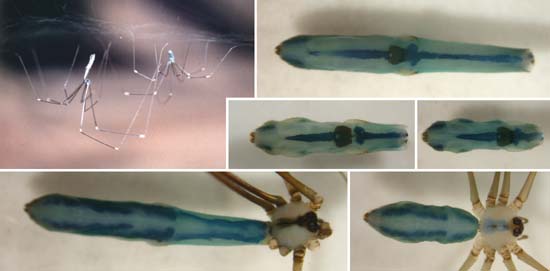
Mecolaesthus longissimus is very unusual among spiders in that the males (lower left) are much larger than females (lower right). Interestingly, it is the abdomen that is on average twice as long in males than in females. Revealingly, the male abdomen is extremely variable in length (compare the three male abdomens in the upper right), and show extremely steep allometric values when scaled on body size (carapace width). Morphometric data suggest that male abdomens are under sexual selection, probably by inter-male competition. Anecdotal observations have since supported this idea (Huber & Villarreal 2020).
In addition, this paper summarizes information on leg-length dimorphism in pholcid spiders. Over 2,600 measurements from 100 species show that longer male than female legs are a near-universal trend in pholcids. In the meantime, a much larger dataset (>17,700 measurements; almost 500 species) has been published in the context of an overview of sexual dimorphisms in pholcid spiders (Huber 2021), see here.